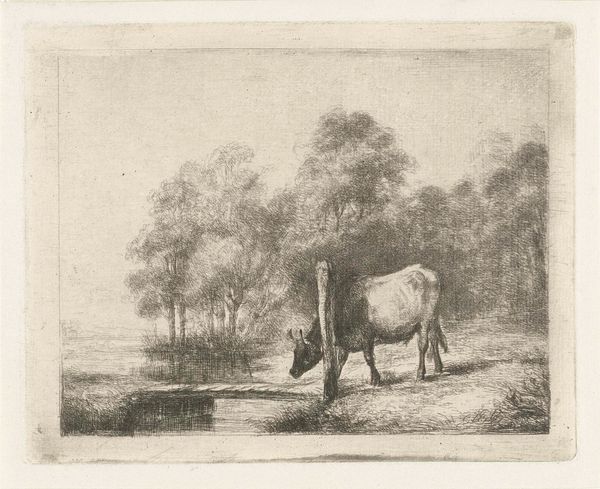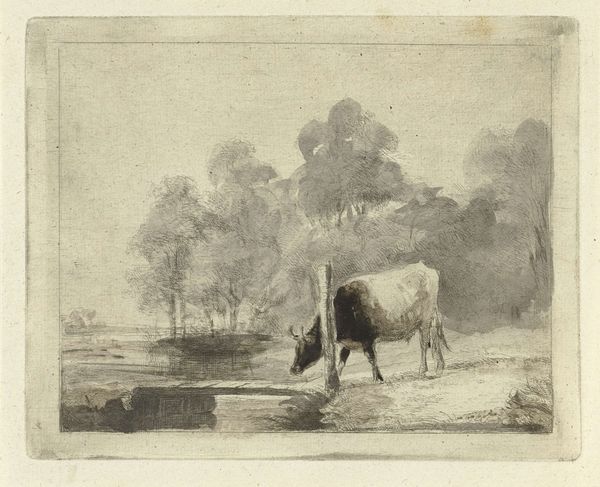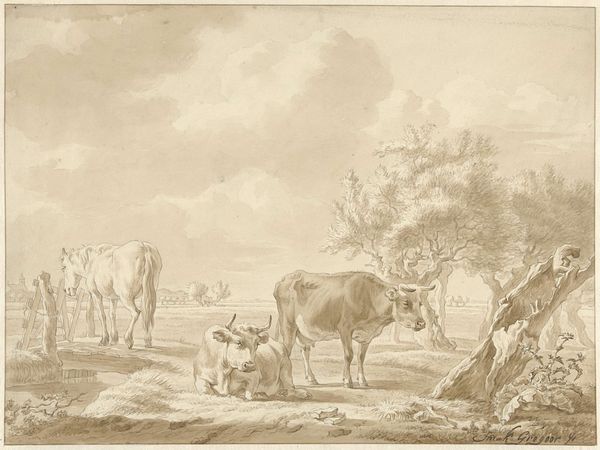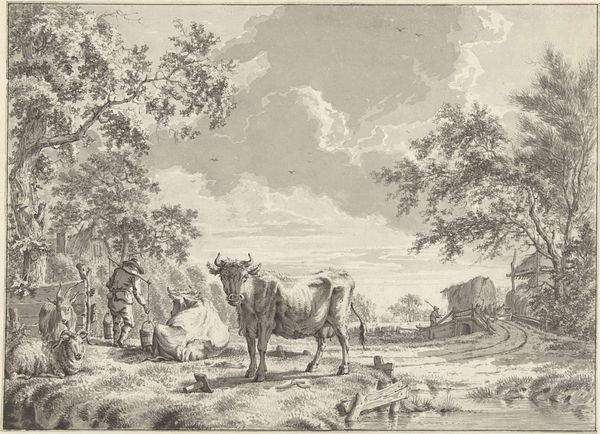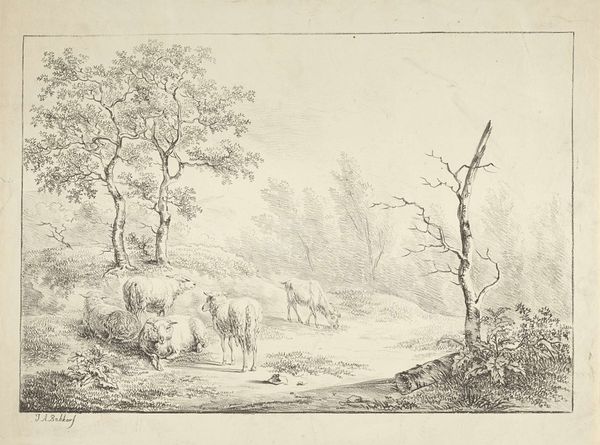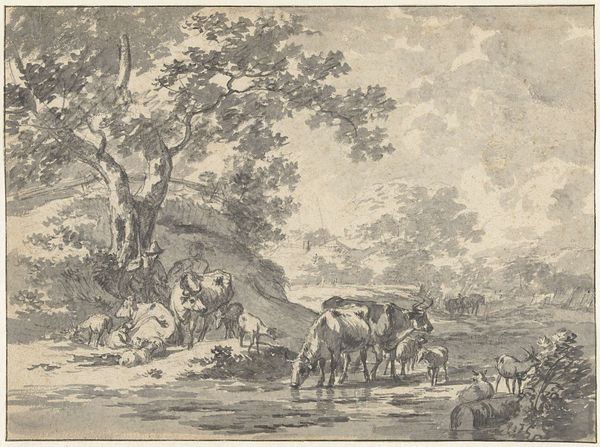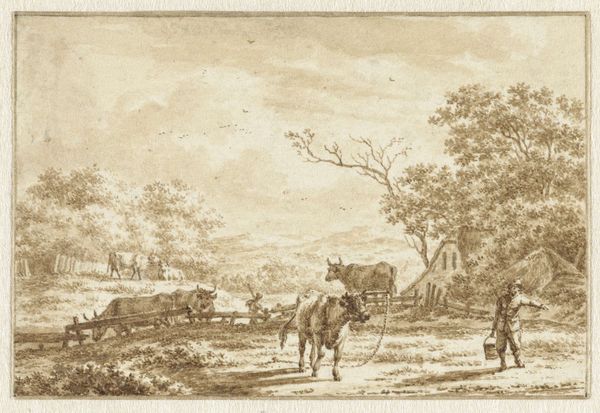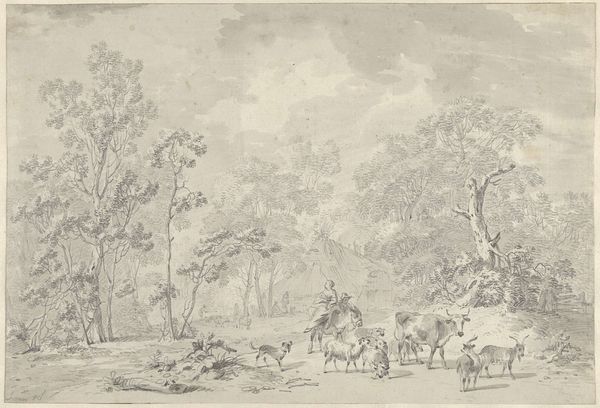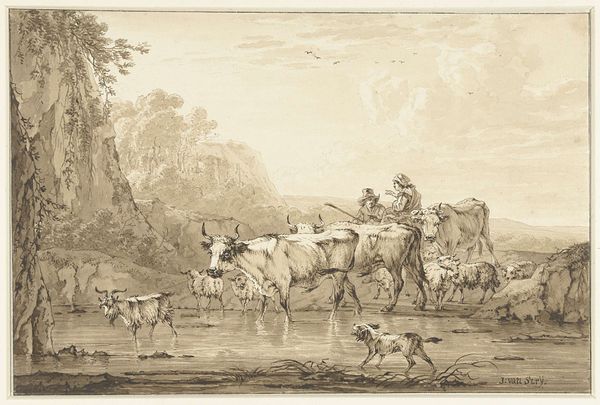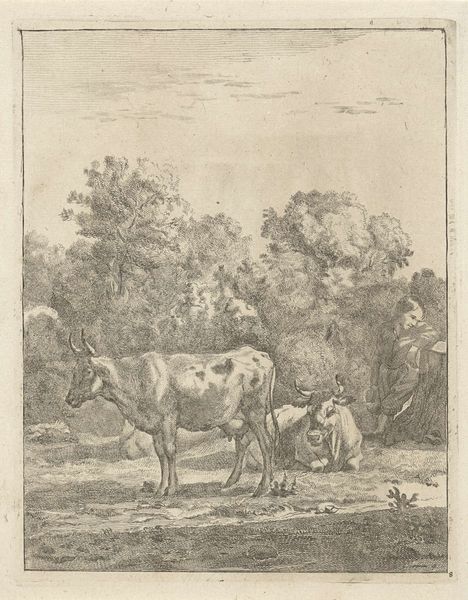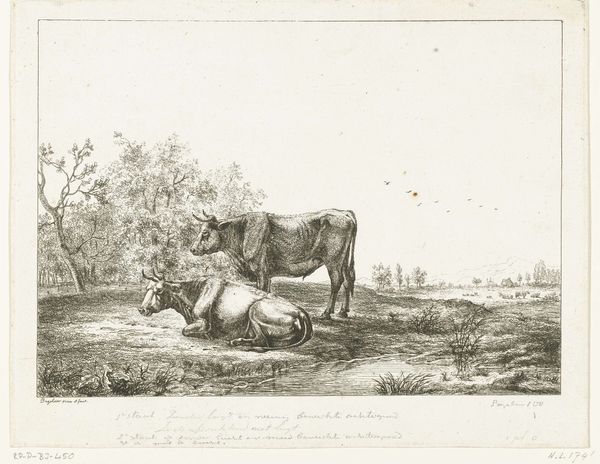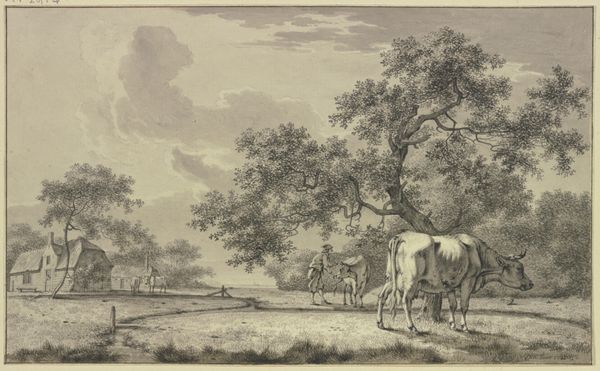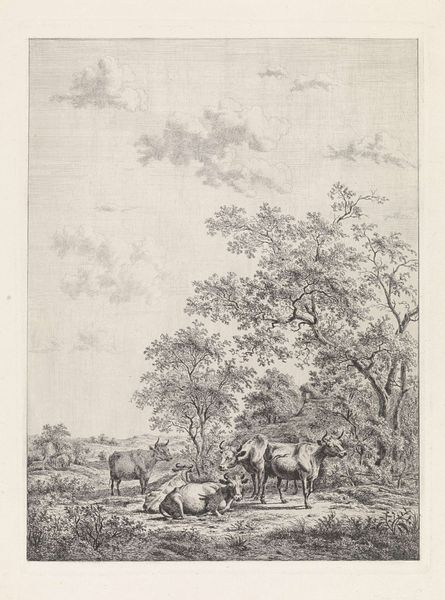
drawing, print, etching
#
pencil drawn
#
drawing
#
animal
# print
#
etching
#
old engraving style
#
landscape
#
realism
Dimensions: height 105 mm, width 130 mm
Copyright: Rijks Museum: Open Domain
Editor: This is Antonie Franciscus Dona's "Landschap met een koe naast een sloot", dating from sometime between 1817 and 1877. It’s an etching – I'm really struck by the incredible detail achieved with such delicate lines. What stands out to you about this piece? Curator: The etching process itself is key. Think of the labor involved: the artist meticulously incising the image onto a metal plate, the careful application of acid… This isn’t just a depiction of a landscape; it's a document of industrial practices finding their place in the art world, almost mediating a move away from farm labour. Editor: Industrial practices? I hadn’t considered that! It feels so… rural. Curator: Exactly. The printmaking process allowed for reproduction and wider distribution of imagery that, while appearing to romanticize the rural, simultaneously relied on relatively newer industrial methods. Where do we draw the line between craft and commodity, and can Dona be said to challenge such rigid boundaries through his method of production? Editor: So, the value isn't *just* in the pastoral scene, but also in how that scene was replicated and disseminated? Curator: Precisely! Consider the social context: who was buying these prints? Were they nostalgic urban dwellers seeking an escape, or landowners wanting to catalog their property? The print exists because there’s a market and a consumer for the bucolic ideal Dona so aptly provides. Editor: That gives me a whole new way to appreciate etchings like this, viewing the finished artwork as not just image but material record. Thanks for the insights. Curator: My pleasure. Hopefully we can better appreciate the many layers to art making, not least how it’s inevitably woven into the economy surrounding it.
Comments
No comments
Be the first to comment and join the conversation on the ultimate creative platform.
